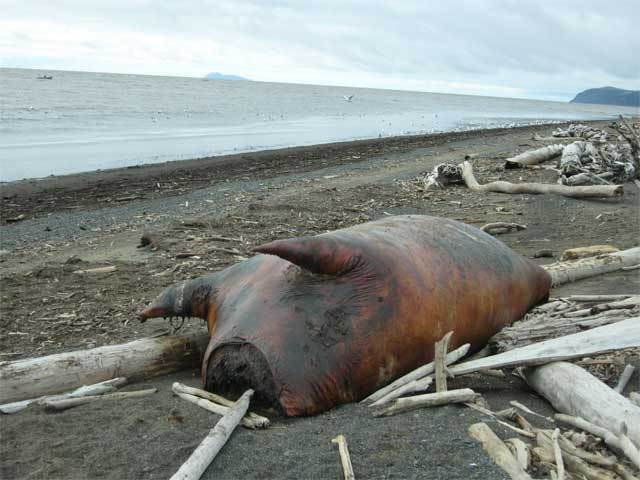Headless Walrus Bodies Found on Alaskan Beach Prompt Federal Investigation
The federal government has opened a criminal investigation into the death of 25 Pacific walrus found on an isolated Northwest Alaska beach.
The cause of death has not been determined, said Fish and Wildlife Service spokeswoman Andrea Medeiros, and investigators do not want to speculate.
Ms Medeiros was quoted by KNBA News as saying that the fact that some of the animals’ tusks appeared to have been “harvested” along with their oosiks – the prized walrus penis bone – did not necessarily mean they were killed illegally.
A spokesperson of the agency said that the investigators didn’t return and she declined to provide any clues on what the USFWS officers found at the scene.
It has been announced that additional information related to the case will be provided by the U.S. Attorney’s office, in due course. Many walrus found in the Chukchi Sea north of the Bering Strait are females with pups that ride the edge of the sea ice north, using the ice as a moving platform to dive and rest. She said, “We’ve opened an investigation and can no longer answer questions about it”. Initial reports indicated the herd of 13 adults and 12 pups had been shot, and some were decapitated-raising suspicions that poachers had targeted the walruses for their ivory tusks. Once a walrus is killed it must be used for its meat, skin or oil. Walrus skulls with tusk attached are collectors’ items.
However, walrus killed only for the collection of ivory is considered wasteful, and “head-hunting” is illegal.
Global warming may also contribute to the animals’ plummeting numbers, because it forces the animals to swim up north. According to the National Snow and Ice Data Center, Arctic sea ice covers just 1.7 million square miles now, its surface having been reduced by 240,000 square miles since 2014. According to a recent NOAA reprot, the sea ice in the Arctic hit this year its 4th lowest level on record and situation doesn’t seem to improve.
But as sea ice gets narrower the animals are forced to move on shore or in northern areas, where they look for clams and sea snails.
An estimated 35,000 animals were pictured in October hauling themselves on to land north of Point Lay, about 500km (310 miles) south-west of Barrow.








